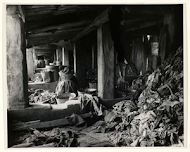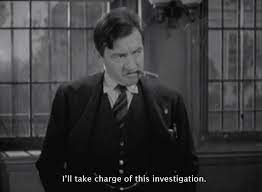Jacob Riis played a pivotal role in the fields of investigative journalism, muckraking journalism, and photojournalism, paving the way for others to follow suit. Riis wrote about and photographed immigration, poverty, education, and social reform. The celebrated journalist's primary claim to fame was a series of photographs of the unimaginably horrible living conditions in New York City in the 1880s.

Jacob August Riis was born in 1849 in Ribe, Denmark, and was dubbed "Jacob the Delver" as a kid for messing with the sewerage in his house. One may joke that this was Riis' first investigation. Riis was raised in a small, two-story house in a poorly kept and malnourished area, with his parents and many siblings. His father was a schoolmaster, and his mother stayed at home, birthing fourteen children. A large number of Jacob's siblings passed away at a young age, predominantly from unclean drinking water and tuberculosis. Only four kids, including Jacob, lived past the age of twenty. In 1870, at the age of twenty-one, Jacob decided to leave home to pursue better opportunities in America.

Jacob Riis landed his first job in America as a police reporter, working for the New York Tribune and Evening Sun. During this time, Riis was able to develop extensive knowledge of New York City's slums that crammed immigrants from different nations together. He soon befriended Theodore Roosevelt, and the two began closely working together. Roosevelt was not a U.S. president yet at this point and worked as the head of Police Commissioners. Riis and Roosevelt would travel to the New York City slums late at night and investigate them. Riis used flashlight photography to document the poor living conditions, homeless children, and terribly soiled alleyways. Unfortunately, the public was blind to these conditions. Riis' photographs offered a much-needed wake-up call.

Jacob Riis published his first book called "How The Other Half Lives" in 1890. The book featured Riis' flash photography of the poor city living conditions, displaying both photojournalism and investigative journalism. This book became the foundation for muckraking journalism and exposed the poor living conditions to upper and middle-class citizens. The photographs featured filth, disease, exploitation, and overcrowded areas inhabited by over one million immigrants. Theodore Roosevelt called Riis, "The most useful citizen of New York." after the book was published. Also, the book later inspired another journalist, Jack London, to go on to expose London's East End in a book of his own, titled "People of The Abyss".

Riis went on to publish a second book in 1901, called "The Making of An American", which was equally as popular as his first book. This time, the book was an autobiography and told a detailed success story of Riis' journey from a homeless immigrant to a praised journalist. Today, he is recognized as a hero in the field of journalism. Two of Riis' most noteworthy quotes from his time as a journalist are, "The slum is the measure of civilization", and, "The world forgets easily, too easily, what it does not like to remember." Both of these raise excellent points and could not be more true. Regarding the first quote, if society does not properly care for the less fortunate, then that paints society as dirty and of low quality. As for the second quote, history sometimes repeats itself and this could be the reason why. People disregard information and events that make them feel uneasy, instead of investigating the causes to avoid similar events in the future and improve society as a whole. The present-day world needs another Jacob Riis.
 .
. 
 .
. 
Sources
https://www.icp.org/browse/archive/constituents/jacob-riis?all/all/all/all/0
https://www.simonandschuster.com/books/How-the-Other-Half-Lives/Jacob-A-Riis/9781625584250#:~:text=How%20the%20Other%20Half%20Lives%20was%20a%20pioneering%20work%20of,City's%20upper%20and%20middle%20class.
https://jacobariismuseum.dk/en/jacob-a-riis/
https://www.moma.org/artists/4928
https://jacobariismuseum.dk/en/gallery/




























